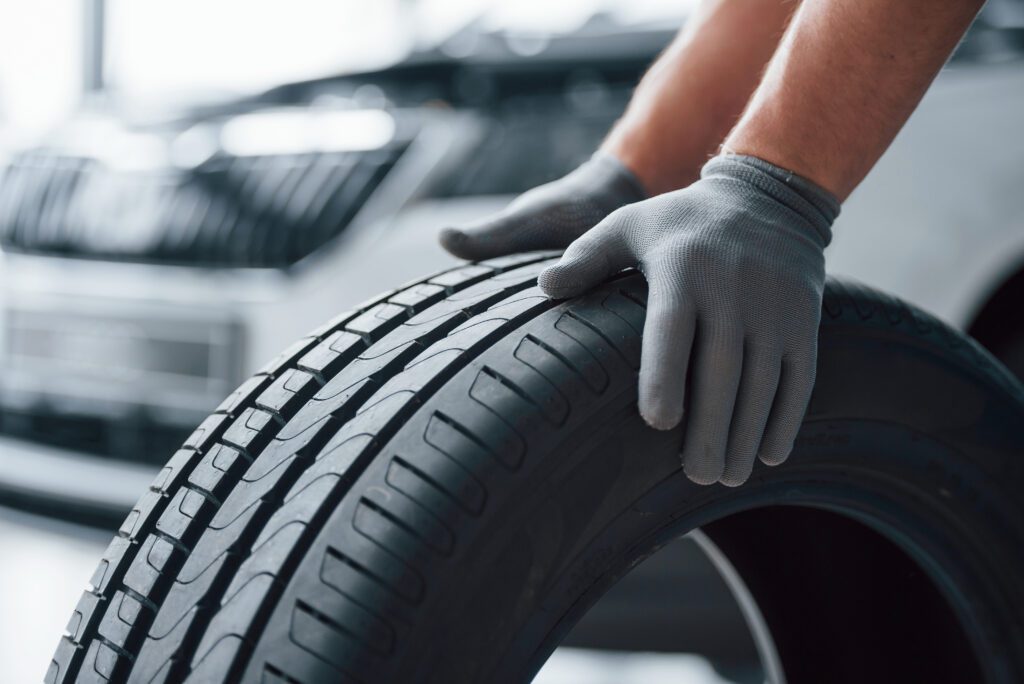
2024 Show Me, Tell Me Questions — Everything You Need to Know
What are the show me, tell me questions during the driving test? Some learners focus so much on driving and parking that they forget about these questions.
Even though getting them wrong won’t make you fail the test, it’s important to know them well. Your instructor will help you, but it’s better to learn them before the test so you feel confident when asked.
we have responded to all the questions comprehensively. Learners can also download a ‘Show me, Tell Me ‘pdf for later use.
About the questions
You’ll be asked 2 vehicle safety questions during your car driving test.
The examiner will ask you one:
- ‘tell me’ question (where you explain how you’d carry out a safety task) at the start of your test, before you start driving
- ‘show me’ question (where you show how you’d carry out a safety task) while you’re driving
You’ll get one driving fault (sometimes called a ‘minor’) if you get one or both questions wrong.
You’ll fail your driving test if your driving is dangerous or potentially dangerous while you answer the ‘show me’ question.
Get ready for your driving test
Get ready to pass your driving test, find out why people fail, learn how to deal with nerves and find out more about how the test works.
Visit the ‘Ready to Pass?’ website
What are the ‘show me, tell me’ questions?
In the UK, ‘show me, tell me’ questions are a set of questions about basic car maintenance and safety checks that are asked during a driving test.
The examiner will ask two questions, one ‘show me’ question where the driver must demonstrate how to perform a task, and one ‘tell me’ question where the driver must explain how to perform a task.
A ‘show me’ question requires the driver to physically demonstrate a task while driving, such as showing how to test the brake lights. A ‘tell me’ question requires the driver to verbally explain a task, such as explaining how to check the oil level.
There are 19 different ‘show me, tell me’ questions in the UK, which can be asked in different combinations. Therefore, there are a total of 38 different possible combinations of questions.
Download 'show me, tell me' questions
‘Show me’ questions
When it’s safe to do so, can you show me how you wash and clean the rear windscreen?
During a driving test, the examiner may ask the driver a “show me, tell me” question about washing and cleaning the rear windscreen. This is an important safety check as a dirty rear windscreen can hinder visibility while driving, especially during rainy weather.
To clean the rear windscreen, the driver needs to use the right-hand control stalk, usually located next to the steering wheel. However, different car models may have different controls for this function.
When it’s safe to do so, can you show me how you wash and clean the front windscreen?
This is an important safety check as a dirty front windscreen can hinder visibility while driving, especially during bad weather conditions.
To clean the front windscreen, most cars are equipped with a windscreen wiper system that is controlled by a lever or a button located on the steering column or dashboard. The driver can spray a small amount of screenwash onto the windscreen using a button or lever, which will activate the wipers to clean it off.
When it’s safe to do so, can you show me how you’d switch on your dipped headlights?
This is an important safety check as driving with headlights on improves visibility, especially during low light conditions such as at dusk, dawn, or during bad weather.
To switch on the dipped headlights, the driver needs to locate the headlight switch which is usually located on the dashboard or the steering column. It’s important to ensure that the dipped headlights are switched on instead of the full-beam headlights, which can temporarily blind other drivers on the road.
When it’s safe to do so, can you show me how you’d set the rear demister?
This is an important safety check as a foggy or misty rear window can obstruct the driver’s view, making it difficult to navigate the road.
To set the rear demister, the driver needs to locate the controls, which are usually situated on the centre console to the left of the driver. The controls will typically include a button or a switch that activates the rear demister and temperature control for the fan. The driver needs to adjust the fan’s temperature to the appropriate level and press the correct button to activate the rear demister.
When it’s safe to do so, can you show me how you’d operate the horn?
The horn is an important safety feature that the driver can use to alert other drivers or pedestrians in emergency situations.
To operate the horn, the driver needs to locate the horn button, which is typically located on the centre of the steering wheel. The driver needs to press the horn button firmly to activate the horn. It’s important to note that the horn should only be used in emergency situations or to alert other drivers of potential danger. Using the horn unnecessarily or inappropriately can be seen as aggressive or intimidating and could result in penalties.
When it’s safe to do so, can you show me how you’d demist the front windscreen?
This is an important safety feature as a foggy or misty windscreen can obstruct the driver’s view, making it difficult to navigate the road.
To demist the front windscreen, the driver needs to locate the controls, which are usually situated on the centre console or dashboard. Most modern cars have a dedicated demist button that the driver can press to activate the demister. Alternatively, the driver can manually adjust the fan’s temperature and direction to clear the windscreen.
When it’s safe to do so, can you show me how you’d open and close the side window?
The side window is an important feature that the driver can use to adjust the temperature and airflow in the car.
To open and close the side window, the driver needs to locate the window controls, which are usually situated on the door panel. There will be separate controls for the driver and passenger side windows. The driver needs to identify the correct control for the window they want to operate and press it to open or close the window. In some cars, the controls may be automatic, so the driver only needs to press the button once to fully open or close the window.
‘Tell me’ questions
It’s important to keep in mind that during a driving test in the UK, the “tell me” questions are only meant to assess the driver’s knowledge of the vehicle and its controls. The examiner does not expect the driver to carry out any tasks. Therefore, the driver should focus on understanding how to respond to the questions correctly, rather than worrying about performing the tasks.
Tell me how you’d check that the brakes are working before starting a journey.
Tell the examiner: The brakes should not feel spongy or slack. The brakes should be tested as you set off and should not pull to the left or right when applied.
Tell me where you’d find the information for the recommended tyre pressures for this car and how tyre pressures should be checked.
To find the recommended tyre pressures for the car, refer to the manufacturer’s guide. To check the tyre pressures, use a reliable pressure gauge and make sure to check and adjust the pressures when the tyres are cold. Don’t forget to check the spare tyre as well, and always remember to refit the valve caps after checking the pressures.
Tell me how you make sure your head restraint is correctly adjusted so it provides the best protection in the event of a crash.
To ensure the head restraint provides maximum protection in the event of a crash, it should be adjusted properly. The rigid part of the head restraint should be at least as high as the top of your ears or eyes, and it should be as close to the back of your head as possible, while still being comfortable. It’s important to note that some head restraints might not be adjustable.
Tell me how you’d check the tyres to ensure that they have sufficient tread depth and that their general condition is safe to use on the road.
To ensure that the tyres are safe to use on the road, you need to check for any cuts or bulges on the surface of the tyres. Additionally, the tread depth should be at least 1.6mm across the central three-quarters of the breadth of the tyre and around the entire outer circumference of the tyre. It’s important to regularly inspect the tyres to ensure their general condition is safe to use on the road.

Tell me how you’d check that the headlights and tail lights are working. You don’t need to exit the vehicle.
To check that the headlights and tail lights are working, you should first turn on the ignition if necessary and then operate the switch for the lights. As this is a ‘tell me’ question, you don’t need to physically check the lights. Instead, you can simply explain that you would walk around the vehicle to visually inspect the headlights and tail lights to ensure that they are functioning properly.
Tell me how you’d know if there was a problem with your anti-lock braking system.
If there is a problem with your anti-lock braking system, the warning light on the dashboard will illuminate. You should check the vehicle manual for any specific instructions on what to do in case of a fault.
Tell me how you’d check the direction indicators are working. You don’t need to exit the vehicle.
To check if the direction indicators are working, you should turn on the indicator switch (and turn on the ignition if needed) and then visually inspect the front and rear of the vehicle to see if the indicator lights are flashing. Since this is a “tell me” question, you don’t need to physically check the lights, just explain the process.
Tell me how you’d check the brake lights are working on this car.
To check the brake lights on this car, you should first turn on the ignition, then press the brake pedal and check that the brake lights come on. You can also use reflections in windows or doors to see if the lights are working properly. Alternatively, you could ask someone to help you by standing behind the car and confirming that the brake lights come on when you press the brake pedal.
Tell me how you’d check the power-assisted steering is working before starting a journey.
To ensure the power-assisted steering is working before starting a journey, you can perform two simple checks. First, apply gentle pressure on the steering wheel while starting the engine. You should feel a slight but noticeable movement as the system begins to operate. Another way is to turn the steering wheel just after moving off, and you should immediately feel the power assistance functioning. If the steering feels heavy, it may indicate a problem with the power-assisted steering system.
Tell me how you’d switch on the rear fog light(s) and explain when you’d use it/them. You don’t need to exit the vehicle.
To switch on the rear fog light(s), you should operate the switch after turning on the dipped headlights and ignition if necessary. It’s important to check that the warning light is on to ensure that the light is working correctly.
You should use the rear fog light(s) when visibility drops below 100 meters due to fog, heavy rain, or snow. It’s important to switch off the rear fog light(s) when visibility improves to avoid dazzling other drivers.
Tell me how you switch your headlight from dipped to the main beam and explain how you’d know the main beam is on.
To switch your headlight from dipped to the main beam, you should operate the switch, which is usually located on the indicator stalk or dashboard. You should make sure the ignition or engine is on before doing so. To know that the main beam is on, check the main beam warning light on the dashboard, which usually illuminates in blue colour.
Open the bonnet and tell me how you’d check that the engine has sufficient oil.
To check if the engine has sufficient oil, you would need to locate the dipstick or oil level indicator under the hood. Remove it and wipe it clean, then re-insert it and remove it again to check the oil level. The dipstick will have minimum and maximum markers, and the oil level should be between these markers. If the level is below the minimum marker, you should add more oil until it reaches the recommended level. It’s important to ensure that the correct type of oil is used, as specified in the manufacturer’s guide.
Open the bonnet and tell me how you’d check that the engine has sufficient engine coolant.
To check if the engine has sufficient engine coolant, you need to identify the high and low-level markings on the header tank (if fitted) or radiator filler cap. You can then visually inspect the level of coolant to ensure it is between the minimum and maximum level marks. If the level is low, you should top-up the coolant to bring it up to the correct level, following the manufacturer’s guidelines. It’s important to check the coolant level regularly and never open the radiator cap when the engine is hot.
Open the bonnet and tell me how you’d check that you have a safe level of hydraulic brake fluid.
To check the hydraulic brake fluid, you need to identify the brake fluid reservoir, check the level against high and low markings and top-up if needed.
10 ‘Show me, tell me’ top tips
- Start preparing early – don’t wait until the last minute to start revising for ‘show me, tell me’ questions. Start learning and practicing with your driving instructor from the beginning of your driving lessons.
- Understand the importance of ‘show me, tell me’ questions – these questions are not just a formality. They are designed to ensure that you have a basic understanding of the safety aspects of your car and that you can carry out basic checks to ensure your vehicle is roadworthy.
- Know the questions – make sure you know all the ‘show me, tell me’ questions that could be asked on your test. You can find the list of questions above or in the official DVSA driving test guide.
- Revise regularly – revise the questions regularly with your driving instructor to help you remember them. Repetition is key to learning and retaining information.
- Practice the practical checks – practice carrying out the practical checks with your instructor so you can do them confidently and correctly on the day of your test.
- Use visual aids – use visual aids, such as diagrams and videos, to help you understand the practical checks and remember the information.
- Take notes – take notes on the ‘show me, tell me’ questions and answers to help you remember the information. You can refer back to your notes to revise later.
- Use online resources – there are many online resources available that can help you revise for ‘show me, tell me’ questions. Use these resources to supplement your learning with your instructor.
- Don’t panic – if you don’t know the answer to a question, don’t panic. Take a deep breath, and answer the question to the best of your ability. If you’re not sure, tell the examiner you’re not sure, but explain what you think you would do.
- Be confident – remember, the ‘show me, tell me’ questions are designed to test your basic knowledge of your car’s safety features. If you have revised and practiced with your instructor, you should be able to answer the questions confidently and accurately.
‘Show me, tell me’ FAQ’s
Answering a ‘show me, tell me’ question incorrectly may result in receiving a driving fault, but it does not necessarily mean you will fail the driving test. To fail the test, you need to get more than 15 minor faults.
The examiner will ask you to open the bonnet and then ask you to answer one of the following questions:
- Identify where you would check the engine oil level. Can you tell me how you would check the engine has sufficient oil?
- Identify where you would check the engine coolant level. Can you tell me how you would check the engine has the correct level?
- Identify where the brake fluid reservoir is. Can you tell me how you would check you have a safe level of hydraulic brake fluid?
- Identify where the windscreen washer reservoir is. Can you tell me how you would check the windscreen washer level?
During the driving test, the examiner will ask you one ‘tell me’ question at the beginning where you’ll have to describe how you’d perform a safety task. Additionally, you’ll be asked one ‘show me’ question while driving, where you’ll have to demonstrate how to perform a safety task.


